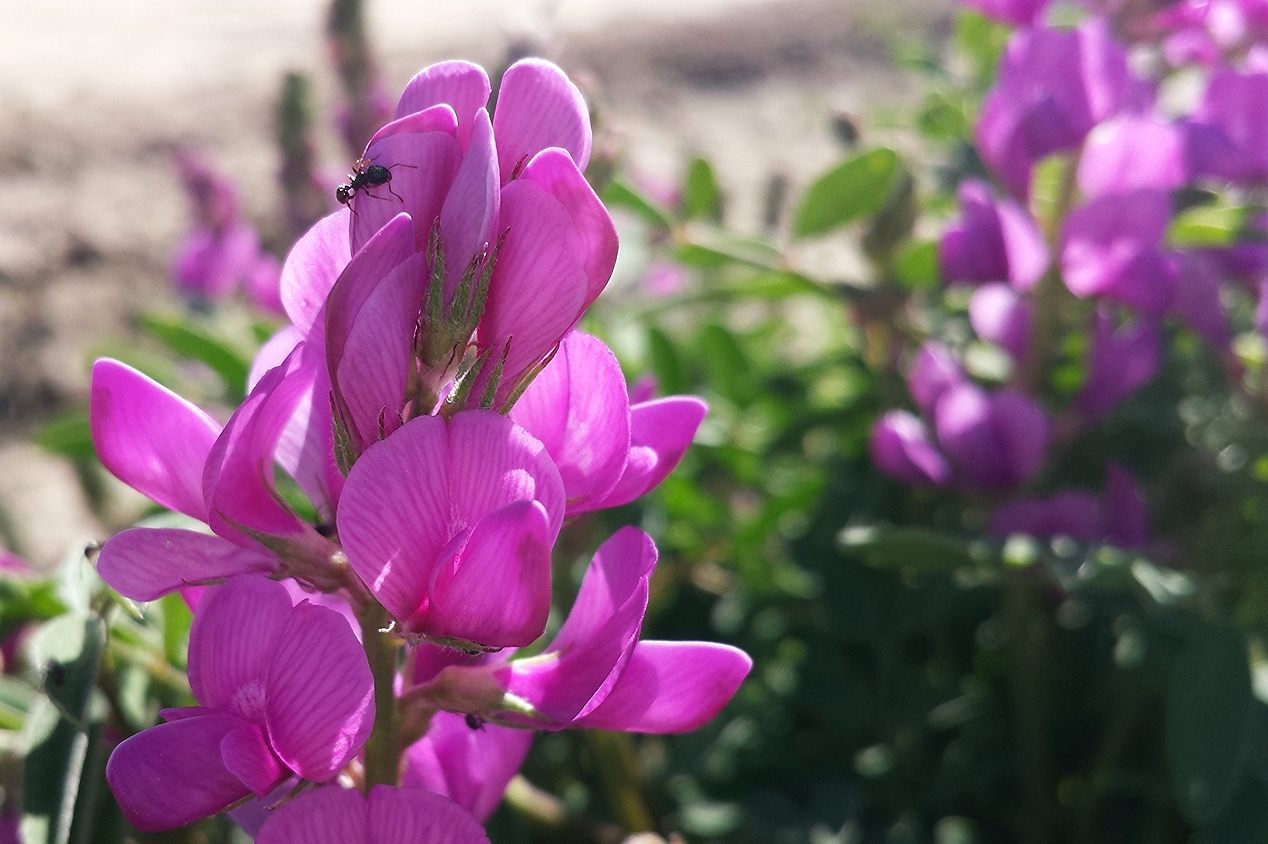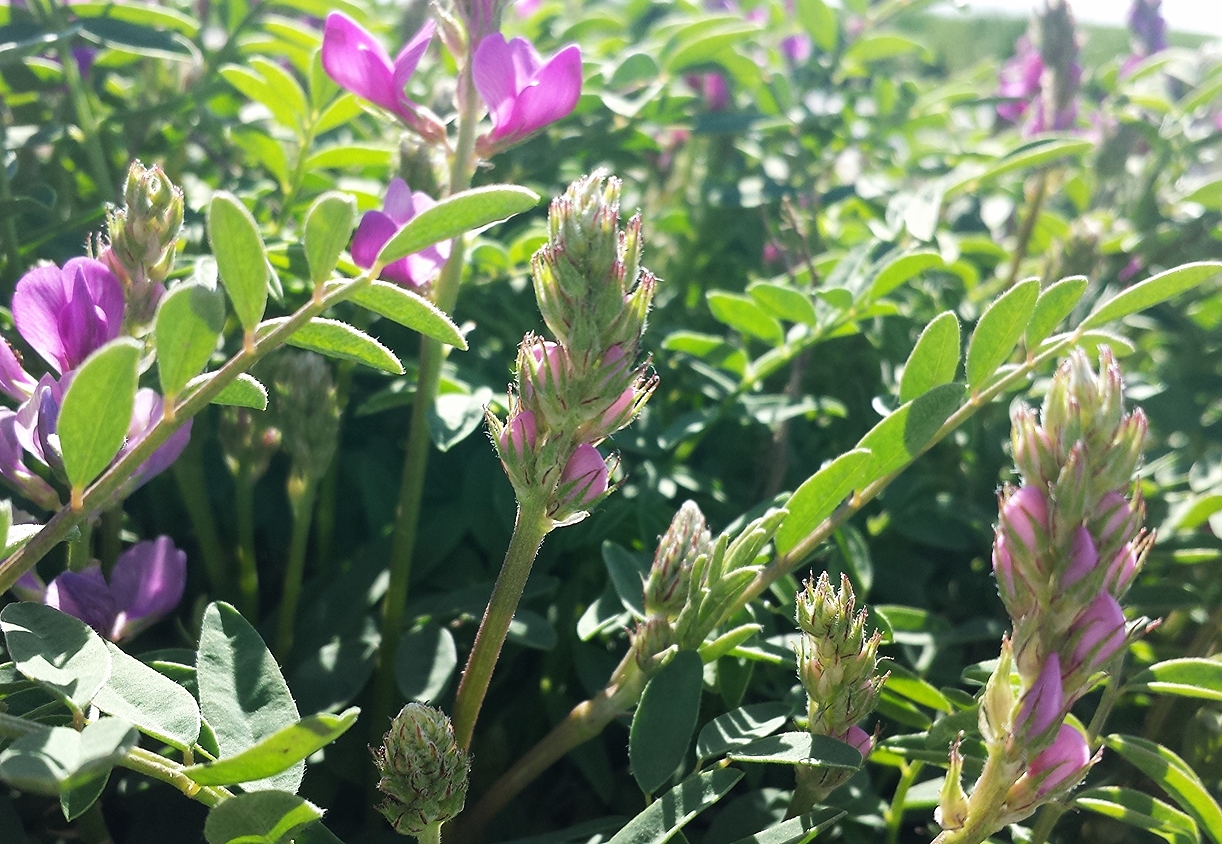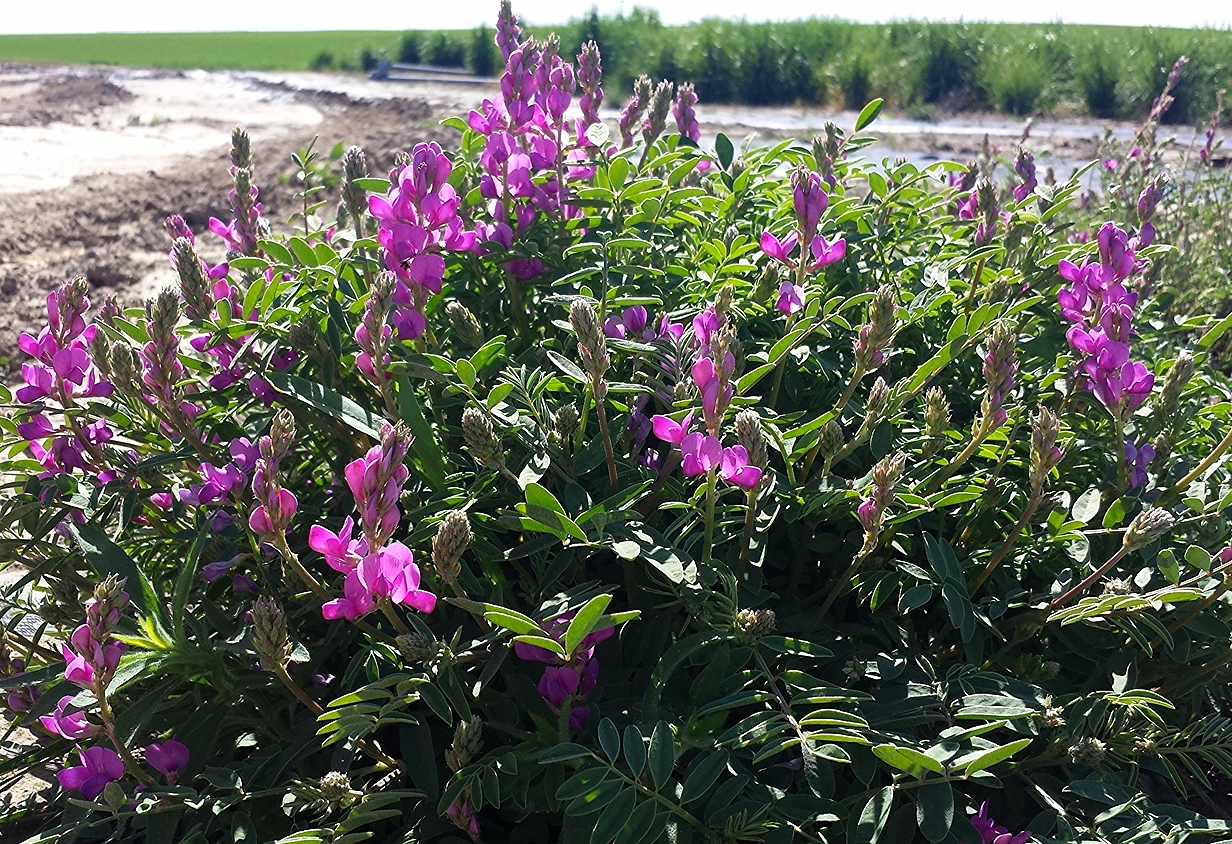Hedysarum boreale (Northern sweetvetch)
Also called Utah sweetvetch. Widely distributed native drought tolerant perennial legume with colorful pink-purple pea-like flowers, blooming May to August. Occasionally rhizomatous. Occurs in the openings of semi-deserts, shrublands and woodland openings; 2,000 to 10,000 ft. elevation. Prefers well-drained loamy sites, but tolerant of sandy or clay soils. Highly palatable to ungulates. Use for habitat restoration, reclamation and roadsides. Provides habitat for sage-grouse and pollinators. Varieties listed below.
DISTRIBUTION / ADAPTATION
INFORMATION & ATTRIBUTES
Family: Fabaceae
Duration: Perennial
Growth Habit: Forb/herb
Native Status: Native
Growth Form: Single crown
Mature Height: 24 in.
Bloom Color: Red
Bloom Period: Late Spring
Annual Precipitation: 12-18 in.
Drought Tolerance: High
Shade Tolerance: Intolerant
Elevation:
Fire Resistance: No
Fire Tolerance: High
Nitrogen Fixation: Medium
SOIL ADAPTATION
Coarse Texture: Yes
Medium Texture: Yes
Fine Texture: Yes
Salinity Tolerance: Low
CaCO3 Tolerance: Low
pH Range: 5.2-8.0
SEEDING NOTES
Seeds per Pound: 46,300
Seeding Rate: 15-25 PLS lbs/acre
Season: Fall/Spring
Days to Germination:
VARIETIES & LOCAL ACCESSIONS
Timp - High seedling vigor, establishment, adaptability, persistence, seed production and nitrogen fixing ability. Competes well with broadleaf weeds. (Released 1994)




